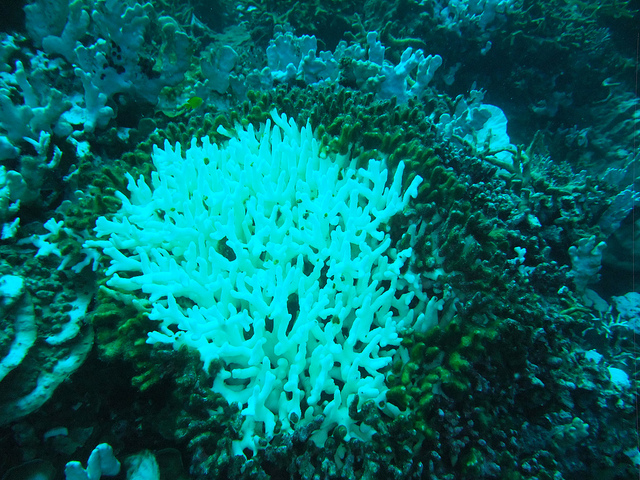Report on Environmental Damage to Coral Reefs in the South China Sea
Executive Summary
The Republic of the Philippines has reported significant environmental damage to protected coral reefs near Thitu Island, located in the South China Sea. An investigation has attributed the damage, estimated at over 11 million pesos (US$194,000), to a Chinese vessel. This incident represents a substantial setback for the achievement of key United Nations Sustainable Development Goals (SDGs), particularly those concerning marine ecosystems and international cooperation.
Incident Details and Findings
A formal environmental survey was conducted following an incident on June 7, when a Chinese vessel, identified by hull number 16838, ran aground. The vessel was stranded for approximately three hours before being escorted away by the China Coast Guard.
- Cause of Damage: Investigators determined that the vessel deployed and dragged a parachute anchor across a sensitive marine habitat.
- Area of Impact: The anchor scarred a minimum of 464 square meters of the reef.
- Subsequent Damage: The anchor was abandoned and later found resting on 307 square meters of coral, obstructing sunlight and posing a continued threat to marine life.
- Investigating Authorities: The findings were presented by the National Task Force for the West Philippine Sea, based on joint dives conducted by the Palawan Council for Sustainable Development, Western Philippines, and the Philippine Coastguard.
Relevance to Sustainable Development Goals (SDGs)
The destruction of this vital marine ecosystem directly contravenes the principles and targets of several SDGs.
-
SDG 14: Life Below Water
This incident is a direct assault on SDG 14, which aims to conserve and sustainably use the oceans, seas, and marine resources. The destruction of coral reefs, which are critical for marine biodiversity, undermines efforts to protect marine and coastal ecosystems from significant adverse impacts.
-
SDG 16: Peace, Justice and Strong Institutions
The event highlights challenges related to SDG 16. It underscores the need for effective and accountable institutions at all levels to manage international waters, ensure environmental accountability, and peacefully resolve disputes concerning maritime territory and environmental stewardship.
-
SDG 17: Partnerships for the Goals
The collaborative investigation by multiple Philippine agencies demonstrates a national partnership (SDG 17) to address the environmental damage. However, the incident also reveals a critical need for stronger international partnerships to enforce environmental protection standards and prevent such occurrences in shared and disputed waters, thereby ensuring collective action for global sustainability.
Analysis of Sustainable Development Goals (SDGs) in the Article
1. Which SDGs are addressed or connected to the issues highlighted in the article?
The primary SDG addressed in the article is:
- SDG 14: Life Below Water – This goal aims to “conserve and sustainably use the oceans, seas and marine resources for sustainable development.” The article’s entire focus is on the damage caused to a marine ecosystem, specifically the “protected coral reefs” near Thitu Island. The investigation into the environmental damage by the “Palawan Council for Sustainable Development” further solidifies this connection, as its purpose is to assess the impact on marine life and the underwater environment.
2. What specific targets under those SDGs can be identified based on the article’s content?
Based on the focus on marine ecosystem damage, the following specific targets under SDG 14 are relevant:
- Target 14.2: “By 2020, sustainably manage and protect marine and coastal ecosystems to avoid significant adverse impacts, including by strengthening their resilience, and take action for their restoration in order to achieve healthy and productive oceans.” The article directly relates to this target by describing the failure to protect a “sensitive marine ecosystem.” The damage from the ship’s anchor represents a “significant adverse impact” on the coral reef, undermining efforts to manage and protect it.
- Target 14.5: “By 2020, conserve at least 10 per cent of coastal and marine areas, consistent with national and international law and based on the best available scientific information.” The article mentions that the incident occurred within an area of “protected coral reefs.” This indicates the area is part of a conservation effort aligned with this target. The damage caused by the vessel directly compromises the integrity and conservation status of this protected marine area.
3. Are there any indicators mentioned or implied in the article that can be used to measure progress towards the identified targets?
Yes, the article provides several specific, quantifiable indicators that can be used to measure the negative impact (or lack of progress) on the identified targets.
- Monetary value of environmental damage: The article explicitly states the damage is valued at “more than 11 million pesos (US$194,000).” This serves as a direct financial indicator of the cost of ecosystem degradation, relevant to assessing the “significant adverse impacts” mentioned in Target 14.2.
- Physical area of ecosystem damage: The investigation found that the vessel’s anchor scarred “at least 464 square metres (4,994 square feet) of reef.” It also notes the anchor was “resting atop 307 square metres of coral.” This provides a precise spatial indicator of the extent of the physical damage to the marine habitat.
- Proportion of ecosystem affected: The report found that the anchor “dragged across some 30 per cent of the reef area.” This proportional indicator helps in understanding the scale of the damage relative to the immediate ecosystem, highlighting a severe setback for conservation (Target 14.5).
SDGs, Targets, and Indicators Summary
| SDGs | Targets | Indicators |
|---|---|---|
| SDG 14: Life Below Water | Target 14.2: Sustainably manage and protect marine and coastal ecosystems to avoid significant adverse impacts. |
|
| SDG 14: Life Below Water | Target 14.5: Conserve coastal and marine areas. |
|
Source: scmp.com







